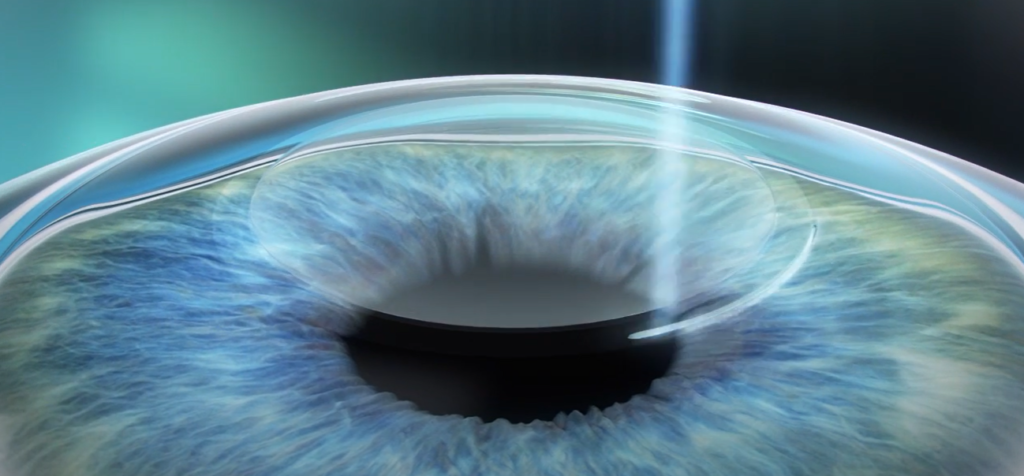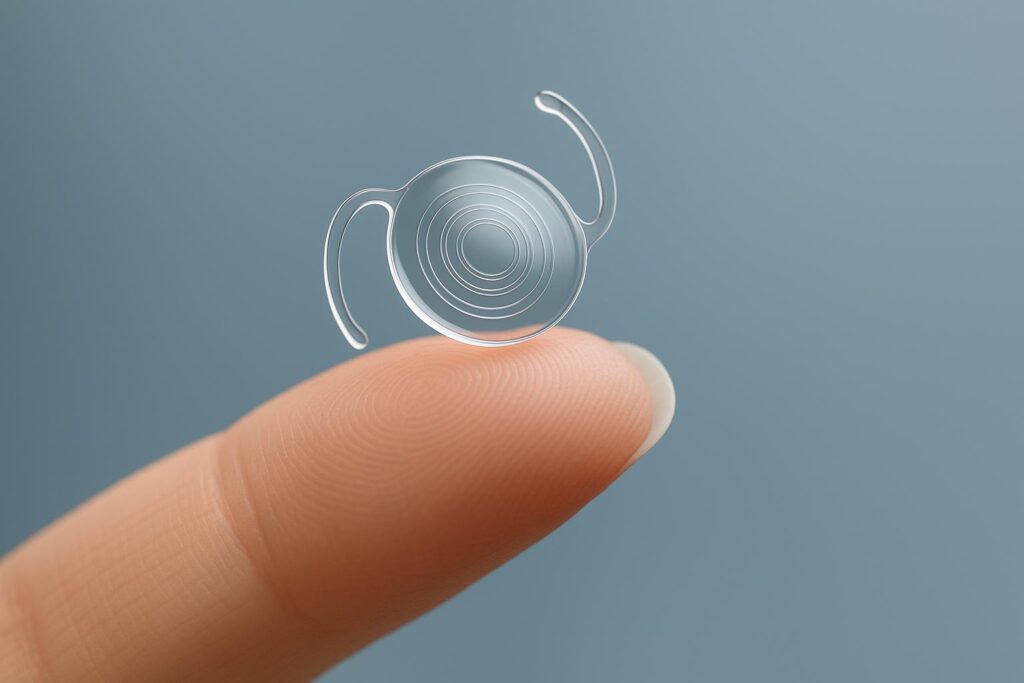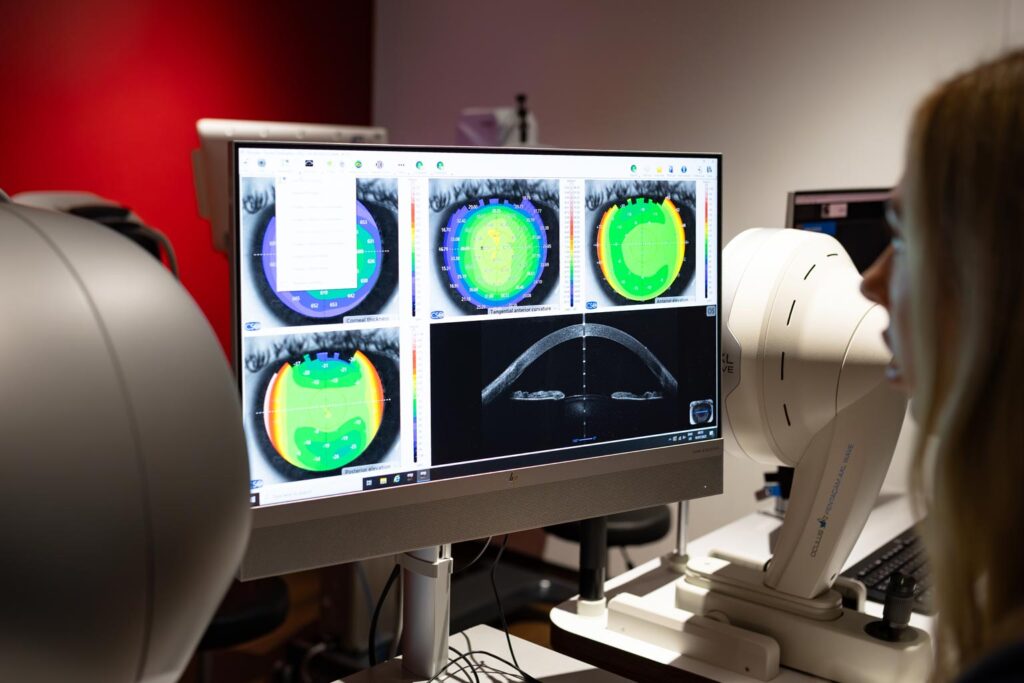Understanding Eligibility by Age and Eye Health
Laser eye surgery has helped millions of people see clearly without glasses or contact lenses. It is safe, precise and highly effective when the right person receives the right procedure. Yet one of the most common questions I hear in consultation is not “how does it work?” but “am I suitable for it?”
The truth is that laser eye surgery is not suitable for everyone. The best results depend on the health, thickness and stability of the cornea, the level of prescription, and the natural changes that happen to the eyes as we age. My approach is always to find what is safest and most effective for each individual. Sometimes that means laser, and sometimes it means a different solution entirely.
This guide explains how suitability changes by age and eye condition, what the pre-operative scans look for, and which alternatives can offer equal or better results when laser is not the best choice.
What Is Laser Eye Surgery?
Laser eye surgery is a treatment that reshapes the cornea, the transparent front surface of the eye. By altering its curvature, light entering the eye focuses precisely on the retina, restoring clear vision.
The main techniques used today are LASIK, SMILE Pro, and PRK/LASEK.
- LASIK creates a thin surface layer on the cornea that is lifted so the laser can reshape the tissue underneath.
- SMILE Pro is the latest generation procedure that works through a keyhole incision and is completely flap-free, making it gentle and fast to heal.
- PRK/LASEK reshapes the cornea directly from the surface and is used when the cornea is too thin for LASIK.
All three methods are highly accurate. What differs is which one suits a patient’s eye anatomy and prescription.

Suitability by Age Group
Ages 20 to 39 – The Early Candidates
People in their twenties and thirties often make excellent candidates for laser eye surgery because the cornea is healthy and the lens inside the eye is still flexible. However, not everyone in this group is ready for surgery immediately.
If your prescription is still changing, it is safer to wait until it has been stable for at least a year. Performing laser on a changing prescription can result in regression later on. Similarly, if the cornea is naturally thin or irregular, we would advise against standard laser. In these cases, an Implantable Collamer Lens (EVO ICL) is often a better option. This lens is placed inside the eye in front of the natural lens and provides the same quality of vision as laser without altering the cornea.
Dry eyes are another consideration. Extended screen use and contact lenses can dehydrate the surface of the eye. In such cases, I normally treat the dryness first, using drops or light-based therapy, before considering surgery.
Ages 40 to 59 – The Presbyopia Years
Around the age of forty, the natural lens inside the eye begins to stiffen. This is called presbyopia, and it is the reason most people eventually need reading glasses even if their distance vision is good.
Traditional LASIK or SMILE corrects distance vision only, so it does not solve presbyopia. For this age group, we often consider Presbyond Laser Blended Vision, a sophisticated technique that gently balances one eye for distance and the other for near, allowing the brain to merge the images for clear vision at all ranges.
If early lens changes are present, or if a patient prefers a permanent solution that will also prevent future cataracts, Refractive Lens Exchange (RLE) may be more suitable. This procedure replaces the ageing lens with a premium trifocal or extended-depth-of-focus lens, giving lasting clarity without the need for future cataract surgery.
For anyone in their forties or fifties, I always perform detailed diagnostics to evaluate both the cornea and the lens. The goal is to recommend a solution that provides sharp vision now and protects eye health in the years ahead.
Ages 60 and Above – Mature Eyes and Cataract Factors
By the sixties, the natural lens usually shows some degree of clouding, even if vision still seems clear. At this stage, laser eye surgery is rarely the best choice because the main source of blur is within the lens rather than the cornea.
The right solution is usually Refractive Lens Exchange or Cataract Surgery with a premium implant. These procedures remove the cloudy lens and replace it with a clear artificial one. The results are excellent and permanent. Modern trifocal and extended-depth-of-focus lenses restore a full range of vision, often allowing patients to read, drive and use digital devices without glasses.
Laser eye surgery on its own would not address the underlying lens ageing, so for most people over sixty, lens replacement offers the best long-term outcome.
Other Reasons Someone May Not Be Suitable
In addition to age, several medical, prescription limits and anatomical factors can make laser surgery less advisable. These include:
- Irregular or thin corneas. Conditions such as keratoconus or post-infection scarring reduce corneal strength.
- Unstable prescriptions. Significant changes in short-sightedness or astigmatism over the past year suggest it is better to wait.
- Severe dry eye disease. The laser process can temporarily worsen dryness, so the surface should be treated first.
- Autoimmune or healing disorders. Diabetes, rheumatoid arthritis or thyroid disease may slow recovery.
- Pregnancy or breastfeeding. Hormonal fluctuations can alter vision temporarily.
- Very high prescriptions. Beyond a certain range, ICL or lens exchange offers better precision.
Each of these situations has a modern alternative. The aim is never to say “no” but to find what will deliver the safest, clearest and most stable result.

The Pre-Operative Assessment
Determining suitability begins with a comprehensive diagnostic assessment. This includes:
- Corneal topography, which maps the shape and curvature of the cornea in three dimensions.
- Pachymetry, which measures thickness to ensure there is enough tissue for safe reshaping.
- Wavefront analysis, which detects subtle optical imperfections.
- Tear-film evaluation, to assess dryness or gland function.
- Retinal and lens imaging, which looks for early cataract, macular changes or other hidden findings.
These scans create a complete fingerprint of the eye. At our clinic, we use advanced ZEISS diagnostic systems, the same technology used in our laser and lens procedures, so every measurement is precise and seamlessly integrated into the surgical plan.

Alternatives for Non-Laser Candidates
Implantable Collamer Lens (EVO ICL)
For patients with high prescriptions, thin corneas or dryness, the EVO ICL provides exceptional quality of vision. The lens is inserted through a micro-incision and sits between the iris and the natural lens. It cannot be seen or felt, and it is reversible if needed. Visual recovery is rapid, and the results are as clear as those from laser.
Refractive Lens Exchange (RLE)
For patients over forty with signs of lens ageing or early cataract, RLE offers a lifelong solution. By replacing the natural lens with a premium implant, we can correct distance, intermediate and near vision in a single step.
PRK/LASEK
When the cornea is borderline thin but the lens is healthy, surface laser options such as PRK or LASEK can still achieve excellent results. These methods reshape the cornea from the surface rather than beneath a flap, preserving tissue strength.
Each of these alternatives is chosen according to the patient’s anatomy and visual goals. What matters most is achieving clear, comfortable and stable vision for life.
The Value of an Honest Consultation
I believe that an honest consultation is the most valuable part of any vision correction journey. The purpose of the initial assessment is not to sell a particular treatment but to understand your eyes in detail. Sometimes that means telling someone they are not suitable for laser right now. Far from being disappointing, this honesty prevents future complications and allows us to plan the safest route forward.
Every patient I see receives a full explanation of the findings from their diagnostic scans, a clear comparison of all possible options, and the time to make an informed decision.
Key Takeaway
Laser eye surgery is life-changing for many people, but it is not a one-size-fits-all procedure. Suitability depends on age, eye health, and lifestyle. Younger adults with stable prescriptions often make ideal candidates. Those in their forties and fifties may benefit from advanced blended-vision or lens-based techniques. For patients in their sixties or seventies, lens replacement offers a permanent answer to both cataract and refractive error.
The goal is not to fit every patient into one treatment but to tailor the approach so that it matches the eyes they have and the life they want to live. With modern technology, almost everyone can achieve clear vision without compromise, it just takes careful evaluation to find the right path.
Closing Thoughts
“When I meet a patient considering laser eye surgery, my first responsibility is to ensure it is the right procedure for them. Laser technology is extraordinary, but it must be applied with precision and honesty. Some people are perfect candidates for SMILE Pro or LASIK; others achieve better, safer results with ICL or lens replacement.
The consultation is where this decision is made. It is where we measure, analyse and listen. My aim is always to provide clarity; not just in vision, but in understanding. When a patient leaves my clinic, I want them to know exactly why a treatment is suitable, or why another option might serve them better. That transparency builds trust, and trust leads to success.”



